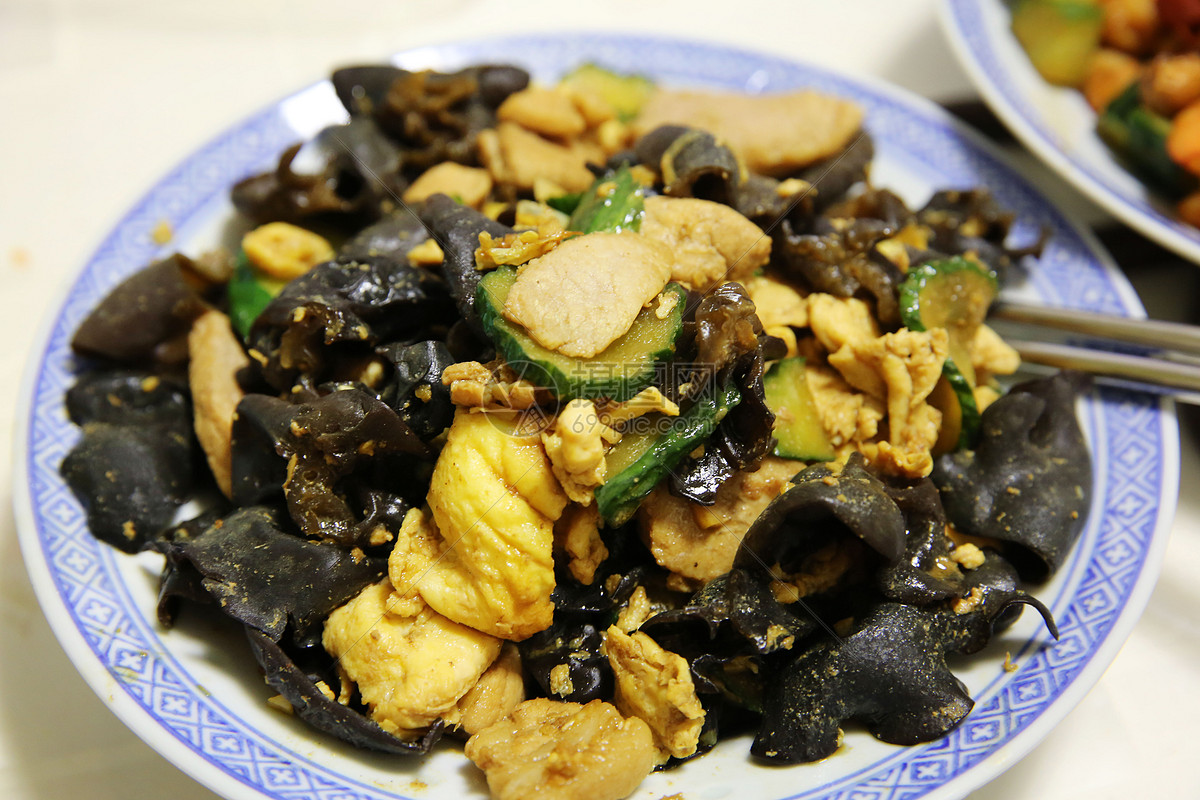
Moo Shu Pork(also spelled mù xū ròu, moo shi pork, mu shu or mu xu pork) is a dish of northern Chinese origin, possibly originating from Shandong. It is believed to have first appeared on the menus of Chinese restaurants in the United States in the late 1960s,[1] and is also a staple of American Chinese cuisine.
Description
In its traditional Chinese version, moo shu pork (木须肉 / mùxūròu) consists of sliced pork tenderloin, cucumber, and scrambled eggs, stir fried in sesame or peanut oil together with bite-sized cuttings wood ear mushrooms (black fungus) and enokitake mushrooms. The dish is seasoned with minced ginger and garlic, scallions, soy sauce, and rice cooking wine (usually huangjiu).
Etymology
There are two primary histories for how the name of this dish is to be written and explained.
One story gives the name as 木犀肉 (pinyin: mù xī ròu). The last character 肉 (ròu) means "meat" and refers to the pork in the dish. The first part 木犀 (mù xī) is the name for the Sweet Osmanthus: a small ornamental tree that produces bunches of small and fragrant blossoms that may be yellow or white.
Scrambled eggs have an appearance that remind people of the mixed yellow and white flowers, so 木犀 (mù xī) is a poetic way of referring to the scrambled eggs used in preparing this dish. Additionally, at Chinese Confucian death anniversary celebrations, the Chinese word for "egg" (蛋; pinyin: dàn) is avoided when referring to dishes containing eggs, as many Chinese curses contain this word. Thus, the word dàn was typically substituted using the euphemism "Sweet Osmanthus." By this reasoning, in this version of the dish's name, the first character, 木 (mù) is short for 木耳 (mù'ěr, meaning "wood ear fungus") and 樨 (xī, meaning "Sweet Osmanthus tree") is short for 桂花 (guíhuā, meaning "Sweet Osmanthus flower").
The second way of writing the name of this dish that is commonly seen in Chinese restaurants in the United States is 木须肉 (pinyin: mù xū ròu). The second character 须 (xū) means "whiskers," and is often given an additional determinative component in writing (to distinguish the meaning of "whiskers" from the other meanings of 須) so that it comes to be written as 鬚. It is possible that 木須肉 (literally "wood whiskers pork") might have been used on the menus of the first American Chinese restaurants to serve the dish in place of the correct compound 木樨肉 ("sweet osmanthus pork") due to haste or simply because of the limitations of Chinese typewriters. It may also merely have been the result of writing the wrong character with a similar pronunciation.
Two additional explanations of the name have unclear origins and may be examples of folk etymology: There is a neighborhood with a similar name in Beijing called Muxi Di (木樨地), which is home to the Muxi Di train station (木樨地站). The dish is also occasionally also called 苜蓿肉 (mùsù ròu) meaning "alfalfa meat".